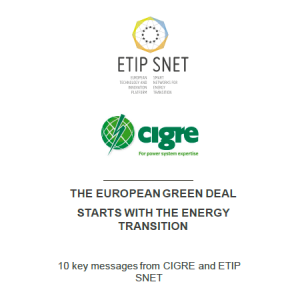ETIP SNET annual activity report 2024
The ETIP SNET 2024 annual report delves into the activities of the initiative and its main achievements for 2024.
Bridging the gap from innovation to market
BRIDGING THE GAP FROM INNOVATION TO MARKET (December 2024)
This policy paper aims to bridge the gap between innovation and market by addressing the multifaceted challenges that inhibit the effective commercialization of innovative energy solutions. It is not merely a response to current market dynamics but a strategic initiative to ensure that Europe remains a global leader in technological advancement and competitiveness in the energy market.
Coordinated energy infrastructure (CEI)
COORDINATED ENERGY INFRASTRUCTURE - PLANNING FOR A DECARBONISED SYSTEM (October 2024)
The paper underscores the importance of a Coordinated Energy Infrastructure (CEI) planning approach to ensure Europe can meet its policy objectives and legislative requirements. It delves into the core aspects needed for effective CEI planning, including the requirements, attributes, and challenges that must be addressed. The paper proposes solutions to these challenges through new policy frameworks, legislation, and targeted research and development.
ETIP SNET Brochure 2024
ETIP SNET has published the 2024 Brochure
This comprehensive document provides an in-depth look at the ETIP SNET initiative, highlighting its strategic objectives, mission, and involved stakeholders. It offers detailed insights into the Governance and Working Groups that form the initiative, showcasing their contributions, key topics, and the benefits of joining.
Ramp-up and role of hydrogen-based power generation
RAMP-UP AND ROLE OF HYDROGEN-BASED POWER GENERATION (June 2024)
This is a paper written by ETIP SNET's WG3 - Flexible generation
The paper provides guidelines and recommendations for using hydrogen (H2) in electric power generation to maintain a stable energy supply with variable renewable energy sources (RES). H2 and other chemical energy carriers can store and quickly dispatch large amounts of energy, making them essential for long-term grid balancing. While H2-based power generation is costly due to the high price of renewable H2, it remains crucial for balancing electricity supply and demand in future power systems.
Energy communities' impact on grids
This is a paper written by ETIP SNET's WG1 - Reliable, economic and efficient energy system, together with ISGAN.
The goal is to discuss the role of energy communities for DSOs and TSOs. Energy communities can unlock active consumers' flexibility potential and more effectively integrate distirbuted renewable resources and new technologies. In contrast, they also have to fulfil all related duties and responsibilities.
Energy Data Space
ENERGY DATA SPACE (January 2024)
This is a policy paper written by ETIP SNET's WG4 - Digitalisation of the eletricity system and customer participation.
The goal of this policy paper is to give a short technical introduction to the topic, providing references for a deeper analysis, and then to focus on the identified opportunities, challenges and necessary actions for a quick deployment of a common European energy data space. For this reason, the document is as much as possible technology agnostic and focuses on the next steps for the concrete implementations.
ETIP SNET annual activities report 2023
The ETIP SNET 2023 annual report delves into the activities of the initiative and its main achievements for 2023.
ETIP SNET R&I Implementation Plan 2025+
ETIP SNET R&I IMPLEMENTATION PLAN 2025+ (August 2023)
The ETIP SNET R&I Implementation Plan 2025+ describes the most urgent R&I needs to be tackled through European Commission and national R&I work programmes and calls. It covers the 2025-2028 timespan with a total overall proposed budget of 954 M€ for R&I. This version updates the previous 2022-2025 edition.
ETIP SNET, R&I Roadmap 2022-2031
ETIP SNET R&I Roadmap 2022-2031 (March 2023)
By 2050, the extensive electrification in (nearly) all sectors of the energy system, combined with significant energy efficiency improvements and CO2 reductions in all sectors, will lead to a carbon-neutral energy system. It is widely understood that this will rely on: The massive use of renewables for electricity, transport and heating & cooling generation; Smart Grids technologies(Digitalisation and Smart control of flexible generation and demand, sustainable buildings); The combination of the above with sector coupling of all energy carriers via storage (such as batteries, by use of liquids (e.g., hydro pumping), CO2-neutral or CO2-free gases) and conversion technologies (for extensive use of carbon-neutral gases and green fuels and possibly hydrogen in industry, transport and buildings); A widely adopted circular approach to energy systems with high recycling rates.
The ETIP SNET R&I Roadmap (RM) 2022-2031 describes the 10-year path towards this future and is regularly revised. This version updates the previous 2020-2030 edition.
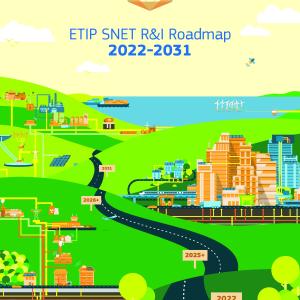
Mapping progress in energy systems research and innovation – Update report
ETIP SNET Mapping progress in energy systems research and innovation – Update report (July 2023)
This ETIP SNET's report is the first to provide an update on progress monitoring using the new research methodology with High-Level Use Cases (HLUCs) and Priority Project Concepts (PPCs) first introduced in the ETIP SNET 2022-2025 Implementation Plan. The new methodology required that the results of the (previous) 1st progress report could be related to the current results. This has been ensured by cross-referencing the PPC development scale with progress on the Research Tasks covered in the previous survey. Such a comparison makes it possible to assess whether progress in PPC and HLUC development is being hindered or facilitated by progress in Research Tasks.
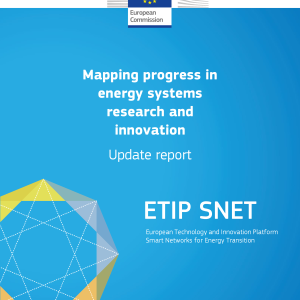
Hydrogen’s impact on grids
Hydrogen’s impact on grids - Impact of hydrogen integration on power grids and energy systems (July 2023)
The EU is undergoing an energy transformation towards a climate-neutral continent by 2050. It has set targets to progressively reduce greenhouse gas emissions towards clean energy to reach this goal and deliver on the EU’s Paris Agreement commitments. These high-level climate targets will require structural changes in various sectors and impact society and the economy. Decarbonisation is reached mainly through electrifying various sectors (currently relying on fossil fuels) stemming from variable Renewable Energy Sources (vRES) and low-emission sources complemented by low-carbon gases.
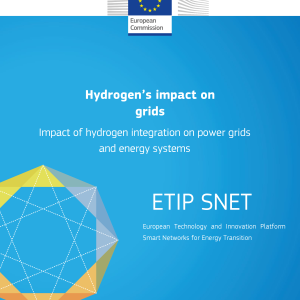
ETIP SNET Slide deck 2024
This is the ETIP SNET slide deck 2024 with main information on the initiative such as descriptions of key objectives of the Working Groups.
Energy storage systems
Energy storage systems, KPI assessment and prioritisation of R&I targets (March 2023)
This Position Paper is an initiative of the ETIP SNET WG2 (Storage technologies and system flexibilities) with the objective of defining a vision for R&D&I of storage technologies and involving stakeholders therein. It analyses different energy storage and conversion technologies, focusing on the specific challenges they face and trying to prioritise and suggest R&I actions to overcome them. Performance Goals are introduced and defined to support the analysis and identify the main challenges. A mapping exercise is performed to define priorities and optimise the R&I strategy to overcome them, as well as a set of KPIs to set targets for the years 2025 and 2031. Energy storage and conversion technologies can provide the necessary flexibility to the energy system across different timescales. Several technologies are available, and their state of the art showed different level of development and maturity. Some of these are established technologies, while others have yet to demonstrate their potential at scale.
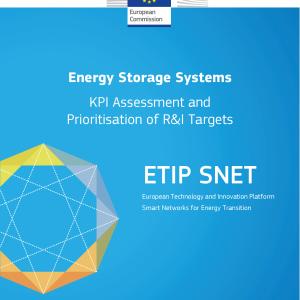
Coupling of Heating/Cooling and Electricity Sectors in a Renewable Energy-Driven Europe
Coupling of Heating/Cooling and Electricity Sectors in a Renewable Energy-Driven Europe (November 2022)
This White Paper, a joint work by ETIP-SNET and ETIP-RHC, focuses on the implications of coupling the electricity, heating and cooling vectors as a vital part of efficiently decarbonising the whole European energy sector. It proposes a way towards efficient decarbonisation in terms of both energy efficiency and infrastructure optimisation aligned with the goals of the “Fit-for-55” package and the REPowerEU plan. To succeed within the challenging timeframe the EU has set, different renewable energy technologies for electricity as well as for heating and cooling should have been verified at least on a pilot scale and need to be further developed and up-scaled. In many cases, they could be coupled to increase energy efficiency. In addition, this White Paper elaborates on promising, often decentralised generation side as well as demand side technologies and solutions. The key role of energy storage as a sector coupling enabler in the decarbonisation strategy is highlighted.
The energy transition towards renewable heating and cooling requires extensions of technical, legal and economic skills. EU-wide coordination efforts need to be intensified more to ensure the education and training of a sufficient number of designers, planners and installers of new technologies.
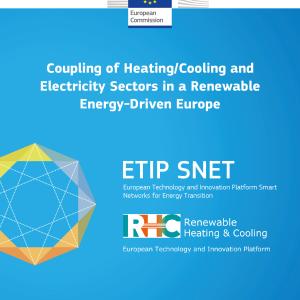
E-mobility deployment and impact on grids
The energy and transport sectors will face important challenges in the next years. Decarbonisation and pollution reductions are no longer optional, and new technologies and solutions need to be deployed to reach the ambitious targets set by National and European policies like the European Green Deal. In this context, electric mobility represents a crucial building block in future energy systems, also providing a new flexibility resource for system operators (SOs). Therefore, an integrated analysis is required to identify the most relevant impacts on current energy systems, taking into account which are the different elements interacting in the system: perspectives of Distribution System Operators, Transmission System Operators and users, technological and regulatory state of the art, and the relevant enablers, such as technological advancements and interoperability. It is in the context of this new ecosystem that the European Technology & Innovation Platform (ETIP) Smart Networks for Energy Transition (SNET), gathering research and industry experts, European and national public authorities, European associations and other relevant actors from the energy sector, has prepared this paper on the ability of SOs to play a major role in facilitating the development of an electrified mobility.
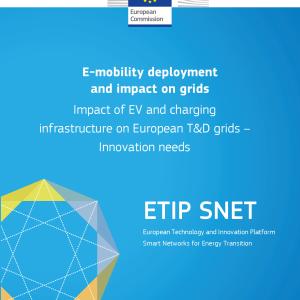
Flexibility for resilience
Flexibility for Resilience. How can flexibility support power grids resilience? (March 2022)
As zero operational-cost variable Renewable Energy Sources are foreseen to dominate the future energy mix, the abundance of green electricity will allow the replacement of fossil fuels in sectors such as heating, cooling, industrial processes, and transport. The intermittency of such energy resources implies significant systemic requirements for flexible solutions; thus, developments of the energy sector in general, and the power system in particular, instigate significant innovation activities in the fields of power system flexibility. Concurrently, complexities and interdependencies of system components and multitude of actors increase the risks of service failures and the complexity of production and grid planning, raising the demand for stronger and more agile resilience means and countermeasures. In this white paper we discuss the item “How can flexibility support resilience?”, considering the increased societal needs of a secure electricity supply.
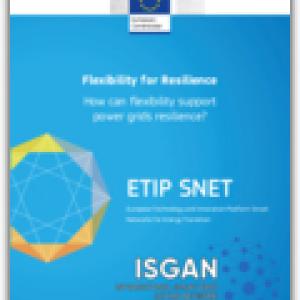
ETIP SNET, R&I Implementation Plan 2022-2025
ETIP SNET R&I Implementation Plan 2022-2025 (December 2021)
The ETIP SNET R&I Implementation Plan (IP) describes in detail the most urgent R&I needs for the next 3–4-year timespan. This version updates the previous 2021-2024 edition. The publication introduces the concept of High-Level Use Cases (HLUC) and the associated Priority Project Concepts (PPCs) to better communicate to its key audiences. Through the HLUCs, the ETIP SNET intends to underline the urgency of realising the transformation of today’s energy system through concrete R&I projects into the needed widely renewable energy system of 2031 and the fully CO2-neutral energy system of 2050 as the ultimate goal. This is connected with concrete outcomes and scopes for real world demonstrations. The R&I Priority Projects Concepts (PPCs) for each of HLUC cover key integration features of the Future European Energy Systems with concrete goals and time schedule. Nine HLUCs – each valid until 2031 – are used to structure the needed R&I Priority Project Concepts.
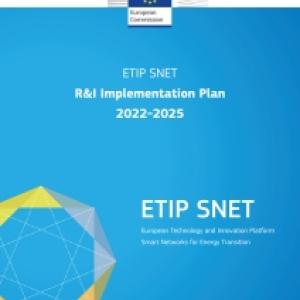
1st Report on mapping progress in energy systems research and innovation
ETIP SNET 1st Report on mapping progress in energy systems research and innovation (November 2021)
Progress monitoring of European research and innovation is an essential activity to assess the progress towards a decarbonised energy system and to shape future R&I efforts accordingly. The ETIP SNET Research and Innovation Roadmap presents the framework in which progress monitoring is executed. The framework consists of six Research Areas, 24 Topics (Research sub-Areas) and 120 Tasks. The objective of the progress monitoring activity is to analyse the state of R&I to identify promising technologies and innovations and measure the coverage degree of the ETIP SNET R&I Roadmap. The results are to be used in the upcoming ETIP SNET Implementation Plan (2023-2026).
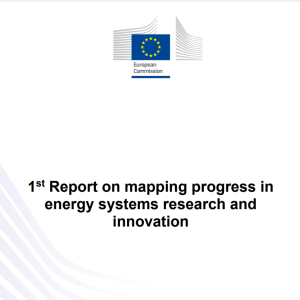
ETIP SNET – Guiding research and innovation activities to support Europe’s energy transition
EUROPEAN TECHNOLOGY AND INNOVATION PLATFORM SMART NETWORKS FOR ENERGY TRANSITION (16 July, 2021)
The updated ETIP SNET brochure provides a general overview of our mission, organisation and how to get involved.
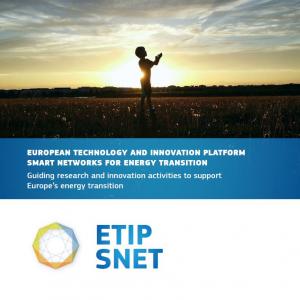
Smart Sector Integration, towards EU System of Systems
Smart Sector Integration, towards an EU System of Systems (July 2021)
The goal of the paper is to address topics related to the EU sector integration strategy, beyond the focus on the technology of energy conversion. It is a follow-up to the first Sector Coupling Paper published by ETIP-SNET in 2020. The energy transition context and the closely linked hydrogen strategy developments are presented considering all the relevant building blocks: architectures, enablers, economic assessment criteria, regulatory and market issues, as well as the related research and innovation needs.
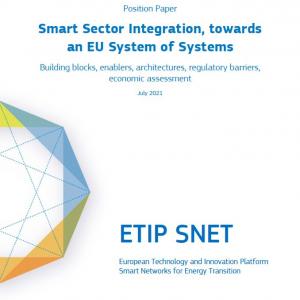
Connecting R&I priorities of ETIPs and PPPs for a common path to achieve the Energy Transition by 2050
Connecting R&I priorities of ETIPs and PPPs for a common path to achieve the Energy Transition by 2050 (18 June, 2020)
In the virtual workshop which took place on 18th June 2020, the priorities identified by ETIP SNET in the 10year Roadmap 2020-2030 and Implementation Plan 2021-2024, and the R&I priorities of the invited ETIPs and PPPs have been shared. The goal has been to create progress in connecting the priorities of the invited ETIPs and PPPs with ETIP SNET priorities and support and collaborate towards achieving the energy transition in 2030-2050.
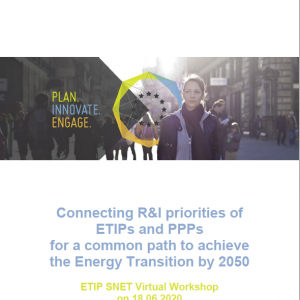
ETIP SNET R&I Roadmap 2020-2030 (UPDATED)
ETIP SNET R&I Roadmap 2020-2030 (single page visualisation) (June 2020)
ETIP SNET R&I Roadmap 2020-2030 (double page visualisation) (June 2020)
This ETIP SNET R&I roadmap covering 2020-2030 is the update and integration of the previous ETIP SNET R&I Roadmap 2017-2026. The profound review was deemed necessary to take into account the development path drawn by the ETIP SNET Vision 2050 and the very clear policy messages outlined in the legislative package “Clean Energy for all Europeans”. It considers systematically the encompassing interaction among the different sectors linked with energy (i.e. electricity, gas, heating and cooling, transport, water, communication etc.), addressing the flexibility needs and the related conversion, storage and solutions integration towards a thorough decarbonisation.
This roadmap synthesizes consolidated and balanced stakeholders’ views for the future R&I needs of the Integrated Energy System with electricity as its backbone. It relies on a detailed analysis of monitored and reviewed national, European and international R&I projects, on experts revising tasks of the previous roadmap, several intermediate consultations and a multi-year series of regional workshops involving national stakeholders of ongoing or recently finished R&I projects.
Disclaimer: Please consider this publication as the final version of the ETIP SNET R&I Roadmap 2020-2030, which substitutes the previous published version released in January 2020.
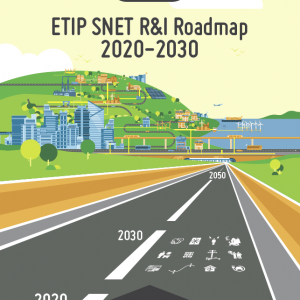
ETIP SNET R&I Implementation Plan 2021-2024
ETIP SNET R&I IMPLEMENTATION PLAN (single page visualisation) (May 2020)
ETIP SNET R&I IMPLEMENTATION PLAN (double page visualisation) (May 2020)
The ETIP SNET R&I Implementation Plan 2021-2024 describes the required R&I activities that must be performed by 2024 in order of priority. 24 topics have been proposed and are based on the 6 Research-Areas specified in the ETIP SNET 10 year Roadmap 2020-2030. These topic descriptions intend to serve as a basis for the (co-funded) R&I projects to be launched in the coming four years.
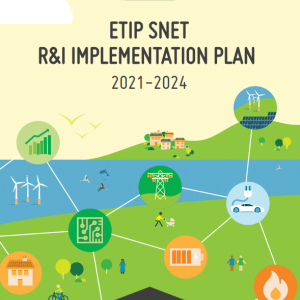
Flexible Power Generation in a Decarbonised Europe
FLEXIBLE POWER GENERATION IN A DECARBONISED EUROPE (January 20th, 2020)
This White paper briefly evaluates all major energy generation systems. It highlights how fit they are and what needs to be done to guarantee unlimited dispatchability and flexibility to the end-use sectors (households, industry, transport). Decarbonised thermal power generation can compensate any available limitations of on-demand renewable power generation (incl. hydro power and bio-mass, …), such that it will strongly contribute to support the transition towards a future carbon-neutral energy supply. Flexible thermal generation technologies for electricity and heat powered with “green” fuels generated by renewable sources will close the existing gap between power supplied by variable renewable energy sources (vRES) and the demand profiles from different end-use sectors smartly shaped by demand-site energy management (DSM) systems.
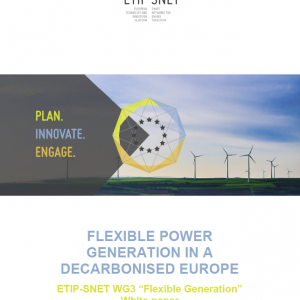
Sector Coupling: Concepts, State-of-the-art and Perspectives
Sector Coupling: Concepts, State-of-the-art and Perspectives (January 2020)
There are great expectations about the role of sector coupling in the achievement of a swift, economical efficient green transition with a high security of supply, but it is unclear to which extent current technologies can provide on this agenda.
Sector coupling brings new challenges such as: amount and shape of electric demand growth with electrification of heating and transport; how much distribution-grid based system reinforcement is needed to accommodate the charging of Electric Vehicles (EV) or electricity needs of Heat Pumps (HP), and when in the coming decades or years these devices should be installed; whether the costs of electrolysers for power-to-gas decreases significantly , and how that affects the economics of electricity vs. gas transmission and distribution.
This ETIP SNET White Paper aims to elaborate on those questions, starting with clarification of concepts and assessment of potential impacts
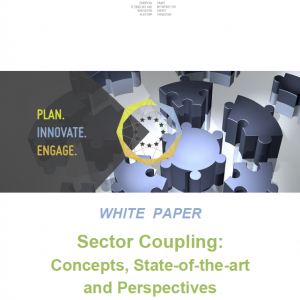
Synergies and Complementarities of European and International Initiatives Towards Energy Transition
SYNERGIES AND COMPLEMENTARITIES OF EUROPEAN AND INTERNATIONAL INITIATIVES TOWARDS ENERGY TRANSITION (March 2019)
This document proposes an analysis of the key organisations that act on a daily basis to research priorities that allow a deep transformation of our energy system, informing public authorities who can make the transformation happen on where to prioritise funding and putting such recommendations into practice with research and development programmes.
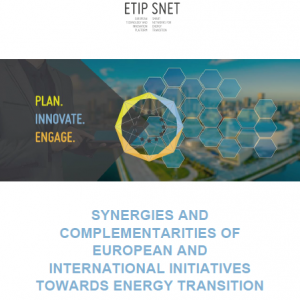
White Paper: Holistic architectures for future power systems
Holistic architectures for future power systems (March 2019)
Holistic architectures for future power systems (Short Version) (March 2019)
A cost effective and secure transition to lower carbon electricity system will require fundamental transformation of the power system control from a traditional centralised to a decentralised paradigm. This fundamental change will require development of novel architectures that can reliably meet the needs of the emerging power system. One of the key tasks associated with the new emerging architectures is to enhance the controllability associated with future power system operation in order to enhance the infrastructure utilisation while cost-effectively managing security and resilience.
In this context, this White Paper sets out the holistic architecture vision that should inform future demonstration projects that would enable large-scale rollout of the new control paradigms.
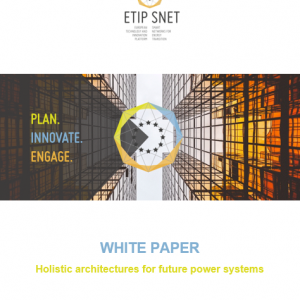
Coverage analysis of the present roadmap (2017-2026)
Coverage analysis of the present roadmap (2017-2026) (February 2019)
The 10-year RD&I roadmap will be updated by 2020 to define the RD&I activities planned for the period 2021-2030. In this aim, a thorough assessment of recent and ongoing RD&I projects contributing to the activities planned within the roadmap, needed to be done. This is the purpose of the “monitoring activity” carried out by the INTENSYS4EU support team.
The objective of the monitoring activity is two-fold:
- To analyse and to disseminate results from RD&I projects being in the scope of the ETIP SNET towards the energy community;
- To measure the coverage degree of each RD&I item of the roadmap and decide which RD&I activities deserve to be maintained, and which are sufficiently well covered by results of recent and ongoing projects and could consequently be removed (“gap analysis”).
The first sub-objective of the monitoring activity focusing on the analysis and dissemination of RD&I projects’ results lying in the ETIP SNET scope has been published by the end of 2018.
The present report contributes to the second sub-objective of the monitoring activity by analysing in detail the degree of coverage of each RD&I item of the 10-year RD&I roadmap covering 2017-26.
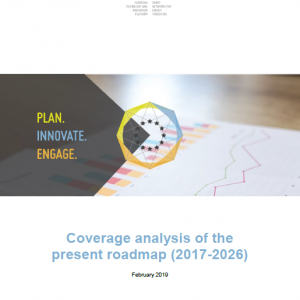
ETIP SNET Action Plan 2019
2019 Action Plan (2019)
This report summarizes the ETIP SNET’s 10-year Roadmap & Implementation Plan as well as the ETIP SNET’s main activities and events to be carried out in 2019.
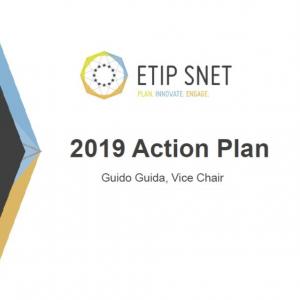
Digitalization of the Energy System and Customer Participation
ETIP SNET Position Paper Summary (November 2018)
Technical Position Paper WG4 (November 2018)
The objective of the technical report “Digitalization of the Energy System and Customer Participation” is to address the use and impact of Information and Communication Technologies as a pervasive tool along the entire value chain of the power generation, transportation and use, and mainly on enabling customer participation.
The summary document presents the main conclusions and recommendations, drawn from the technical paper, to energy stakeholders that may be less concerned with the technical specifications mentioned in the former.
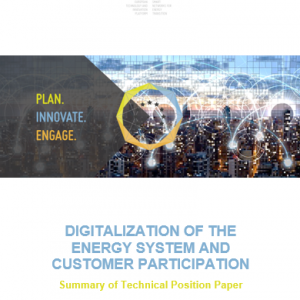
ETIP SNET Position on Missions for Horizon Europe
ETIP SNET Position on Missions (24 October, 2018)
The current EU proposed Missions for Horizon Europe do not include Energy. This omission creates a risk of not prioritising future research needed to meet the Paris agreement targets. We are asking the members of the Council and the European Parliament to include Energy and Decarbonisation among the themes of the first missions that will be adopted at the end 2018-early 2019.
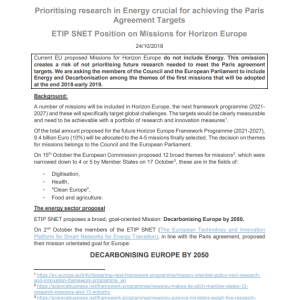
ETIP SNET’s reply to Public Consultation – October 2018
ETIP SNET Reply to Public Consultation October 2018 (9 October, 2018)
On July 17, 2018, the European Commission launched a public consultation on the “Future climate and energy policy – a Strategy for long-term EU greenhouse gas emissions reductions.” This document covers the ETIP SNET’s view on the types of transformations required, level of ambition and key actions to achieve it.
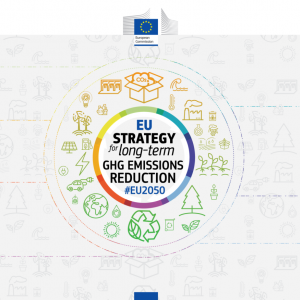
Presentation of Recent and Ongoing R&I Projects in the Scope of the ETIP SNET
Presentation of recent and ongoing R&I projects in the scope of the ETIP SNET (August 2018)
The 10-year R&I roadmap will be updated by 2020 to define the R&I activities planned for the period 2021-2030. In order to do this, a thorough assessment of recent and ongoing R&I projects contributing to the activities planned within the roadmap is to be done. This is the purpose of the “monitoring activity” carried out by ETIP SNET.
The present report contributes to the monitoring activity by analysing and disseminating R&I projects’ results lying in the ETIP SNET scope. It has been elaborated following a survey conducted towards 250+ projects, amongst which 121 projects have contributed: 43 of them are co-funded by FP7 or Horizon 2020 and 78 are funded through other instruments, in general at national or regional level.
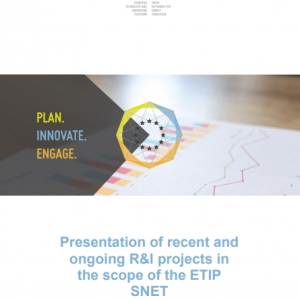
ETIP SNET Annual Report 2017
2017 Annual Report (24 January, 2018)
This annual report summarizes the ETIP SNET’s internal organisation and main achievements in 2017.
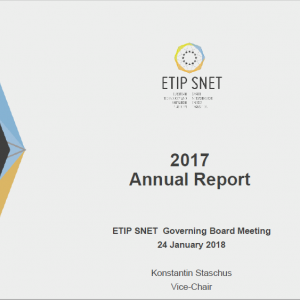
ETIP SNET Annual Report 2018
2018 Annual Report (2018)
This annual report summarizes the ETIP SNET’s internal organisation and main achievements in 2018.
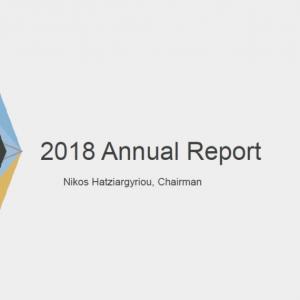
Minutes of ETIP SNET Regional Workshops 2017
D3.3 Minutes of the regional workshops 2017 (03 November, 2017)
The workshops were organised for 2017 according to the schedule presented below:
- Regional Workshop 1 – Location: Aachen (Germany) 18-19 September 2017
- Regional Workshop 2 – Location: Lisbon (Portugal) 28-29 September 2017
- Regional Workshop 3 – Location: Nicosia (Cyprus) 23-24 November 2017
- Regional Workshop 4 – Location Riga (Latvia) 7-8 December 2017
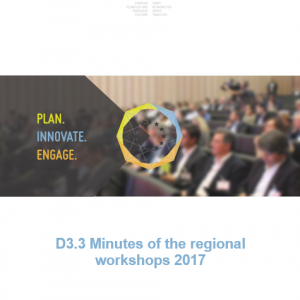
ETIP SNET Implementation Plan 2017-2020
ETIP SNET Implementation Plan 2017-2020 (October 2017)
ETIP-SNET IP 17-20 Briefing (October 2017)
ETIP SNET Public Consultation IP17-20 – Assessment of comments (October 2017)
The ETIP SNET IP 17-20 aims at listing the short-term priorities for research and innovation (R&I) in relation with Smart Networks for the Energy Transition. The Implementation Plan is based upon the ETIP-SNET R&I roadmap 2017-2026 (published in January 2017) which specifies the long-term R&I targets for the evolution of the European energy system. You can download the ETIP SNET IP 17-20 and accompanying briefing here below:
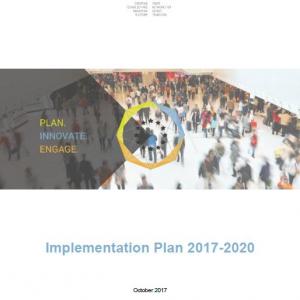
ETIP SNET VISION 2050 – Integrating Smart Networks for the Energy Transition: Serving Society and Protecting the Environment
VISION 2050 (2017)
The ETIP SNET Vision for 2050 is:
A low-carbon, secure, reliable, resilient, accessible, cost-efficient, and market-based pan-European integrated energy system supplying the whole economy and paving the way for a fully CO2-neutral and circular economy by the year 2050, while maintaining and extending global industrial leadership in energy systems during the energy transition.
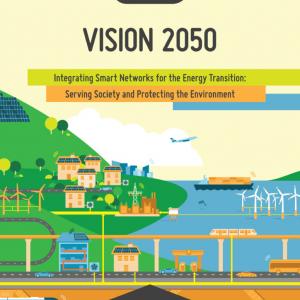
10-year ETIP SNET R&I roadmap covering 2017-26
Final 10-year ETIP SNET R&I roadmap covering 2017-26 (9 December, 2016)
The new 10 year ETIP SNET Research & Innovation Roadmap 2017-26 provides a System view of the entire energy transition. It addresses a scope larger than smart electricity grids by encompassing interactions with the gas and heat networks and focuses on integration of all flexibility solutions into the power system, including energy storage technologies.

Energy Stories Compilation
Energy Stories Compilation (November 2016)
The “ETIP SNET Energy Stories” are designed to bring successful applications in energy transition technologies, often developed through public funding, closer to the citizen, highlighting whenever possible the direct benefits of the latest technologies to the energy consumer. In this publication you will find a collection of 20 stories.
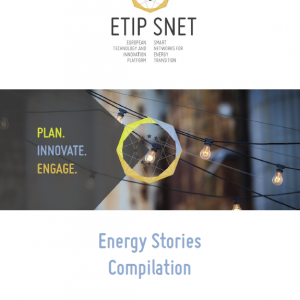
ETIP SNET & CIGRE 10 Messages for European Green Deal
10 key messages from CIGRE and ETIP SNET (2016)
The European Technology and innovation Platform for Smart Networks in Energy Transition (ETIP SNET) and the International Council on Large Electric Systems (CIGRE) strongly welcome the announcement of the European Green Deal by the European Commission and to take this opportunity to highlight 10 key messages that illustrate our common Vision of the energy sector to be achieved by 2050.
